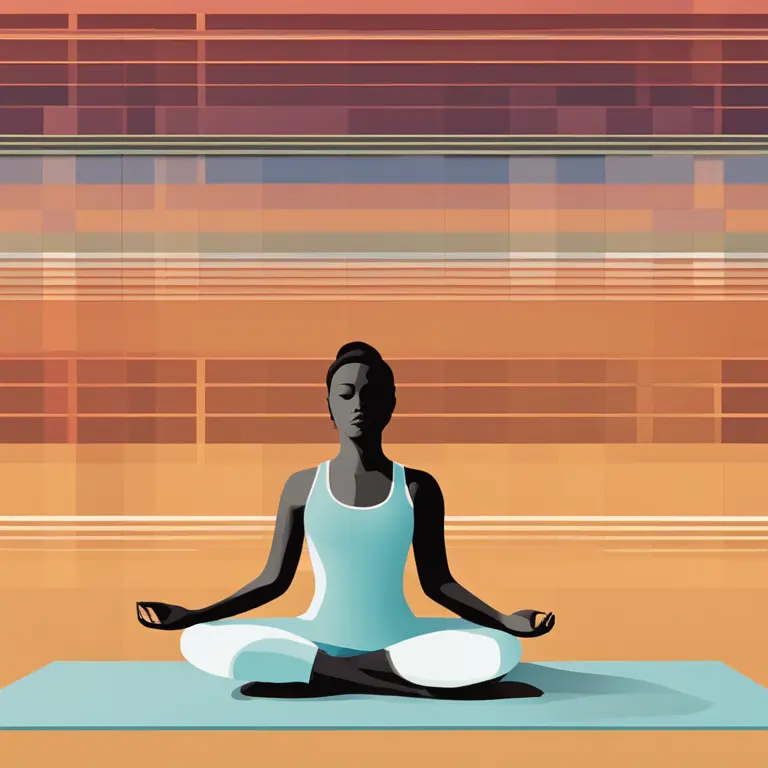
Best Meditation Techniques for Easing Anxiety
Discover the most effective meditation methods to calm anxiety and foster tranquility in this insightful guide.
article by Hina Kurosawa
Introduction to Meditation and Anxiety Relief
Meditation has long been a refuge for those seeking solace from the clutches of anxiety. As we continue to navigate a complex and often overwhelming world, the art of stilling the mind becomes increasingly valuable. With numerous techniques at our disposal, the quest for the best meditation practice to alleviate anxiety is a highly personal journey. In this exploration, we delve into the nuances of various meditation forms tailored to ease the tumultuous waves of anxious thoughts.

Mindfulness Meditation: A Present Focus
Mindfulness meditation is a pillar in the realm of anxiety management. Rooted in the present, this practice encourages participants to observe their thoughts and feelings without judgment. The intent is to recognize anxiety-inducing patterns and disengage from the cycle of worry. By calmly acknowledging the present moment, practitioners often find a reduction in stress levels, making mindfulness meditation a goto choice for modern seekers of peace.

Guided Visualization: Crafting Calmness
Guided visualization ushers the meditator into a state of guided daydreaming. Here, through the medium of story and imagery, one is transported to calming scenarios—a practice that has showcased efficacy in lowering anxiety. This technique is particularly beneficial for individuals who struggle with maintaining focus during meditation, as the guiding voice provides a gentle structure to the session. The vivid sensory details involved can powerfully counteract anxious feelings.

Body Scan Meditation: Release Tension
In body scan meditation, attention is methodically shifted through various parts of the body. This scan is intended to uncover and release accumulated tension, often a physical manifestation of anxiety. As awareness is directed from head to toe, the practitioner is encouraged to breathe into each body part, invoking a sense of relief and tranquility. This systematic approach is a favorite for its tangible sensations and immediate relaxation effects.

Mantra Meditation: A Tranquil Repetition
Repetition is at the heart of mantra meditation, where a calming word or phrase, known as a mantra, is repeated silently or aloud. The mantra becomes an anchor, drawing the mind away from anxiety and towards a single point of focus. The rhythm and repetition induce a meditative trance, offering a respite from the incessant stream of anxious thoughts. For many, the simplicity of this technique is its most appealing trait.
Breath-Focused Meditation: Breathing through Anxiety
Breathing techniques are central to many meditation practices, but as a standalone approach, breath-focused meditation is extraordinarily beneficial for managing anxiety. By slowing down and deepening one's breath, the heart rate lowers and a natural relaxation response is triggered. Regular practice can teach the body to default to deeper breathing during anxious episodes, providing a readily available tool to combat stress.
Progressive Muscle Relaxation: Easing the Mind through the Body
Progressive Muscle Relaxation (PMR) is a more active meditation technique, where one alternatively tenses and relaxes muscle groups. This controlled contracting and loosening can highlight the stark contrast between tension and calmness, guiding the practitioner to a deeper understanding of relaxation. Given its dual focus on physical and mental states, PMR has proven particularly potent for those whose anxiety is deeply interwoven with bodily stress symptoms.
Published: 1/14/2024
Modified: 1/15/2024
More predictions
Come back here soon to learn more about yourself and your future


Mindfulness & Meditation: A Guide for High Schoolers
Discover the benefits of mindfulness meditation tailored for the hectic life of high school students, and learn simple strategies to incorporate it into the daily routine.


Healing Through Mindfulness: Meditation & Trauma Recovery
Mindfulness meditation offers a powerful tool for individuals seeking solace and healing from traumatic experiences. Discover how this practice can aid in the journey towards inner peace.


Mindfulness Meditation Basics for First Graders
Introducing foundational mindfulness meditation practices to instill calm and focus in first-grade students.